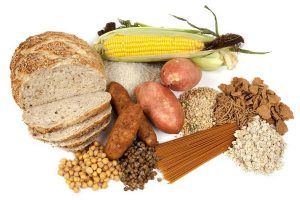Everyone needs the right amount of fibre in their diet. It is found in a wide variety of foods & has a ton of health benefits both short term & long term.
What is it?
Dietary fibre is the indigestible part of plants that passes relatively unchanged through the stomach and intestines. It is mostly made up of carbohydrates, which consist of different types of sugars.
There are two types of fibre: soluble and insoluble. Both types are present, in varying degrees, in all plant foods. Soluble fibre can’t be digested, but it absorbs water to become a gelatinous substance that passes through the body. Good sources of soluble fibre include fruits, oat bran, barley, beans, lentils, peas, soy milk and soy products.
Insoluble fibre is mostly unchanged as it passes through the body and adds bulk to faeces. Good sources include wheat, corn and rice bran, nuts, seeds and wholegrain foods.
Resistant starch is not traditionally thought of as fibre, but it acts in a similar way. It is found in many unprocessed cereals and grains, firm bananas, potatoes & lentils.
The pros
Fibre is important in aiding digestion. Soluble fibre soaks up water, which helps to plump out the faeces, and allows it to pass through the gut more easily. It slows down the rate of digestion, and this is then counteracted by insoluble fibre, which speeds up the time that food takes to pass through the gut.
A lack of fibre, particularly insoluble fibre, can lead to gastrointestinal problems such as constipation, irritable bowel syndrome, colitis, colon cancer & haemorrhoids.
It is thought that soluble fibre helps protect against heart disease by lowering blood cholesterol. Cereal fibre seems to offer more protection against coronary heart disease than the fibre from fruit and vegetables.
People who are overweight have been shown to lose significant amounts of body fat by increasing the amount of fibre, especially soluble fibre, in their diets.
A high-fibre diet also slows glucose absorption from the small intestine into the blood, reducing the possibility of a surge of insulin. Fibre is therefore recommended for people with diabetes and a high-fibre diet can help to prevent development of the condition.
Resistant starch is also important for bowel health. Bacteria in the large bowel ferment and change the resistant starch into short-chain fatty acids, which are important for bowel health.
The cons
A sudden switch from a low- to high-fibre diet can create abdominal pain and increased flatulence. Increase your fibre intake gradually and add it from food rather than supplements.
Very high-fibre diets may decrease absorption of minerals such as iron, zinc and calcium, so stick to the recommended intake.

